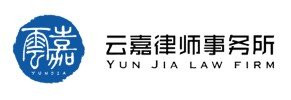In the consumer goods sector, trademarks are pivotal to brand identity, reflecting a company’s image and credibility and directly influencing consumer purchasing decisions. Robert Chan explains how effective trademark protection can prevent unauthorized use of identical or similar marks, reduce market confusion and safeguard legal rights.
In the context of economic development, investment, consumption and exports are frequently identified as the three principal drivers of economic growth, with consumption serving as the ultimate demand and objective. Consumption meets both individual and societal needs, and an increase in consumer demand can stimulate production, encourage businesses to scale up their output, and consequently foster overall economic advancement.
The consumer goods sector is notably proximate to the general populace and consumers. This sector spans a diverse array of fields, including: food (e.g., snacks, frozen foods, canned goods, instant meals), beverages (e.g., soft drinks, alcoholic beverages, fruit juices, mineral water), cosmetics (e.g., facial skincare products, makeup, perfumes), personal care products (e.g., shampoos, body washes, toothpastes, shaving products), household items (e.g., cleaning agents, kitchenware, household appliances, home decor), clothing (e.g., apparel for men, women, children, sportswear), accessories (e.g., footwear, bags, watches, jewellery), electronics (e.g., consumer electronics such as smartphones, tablets, home appliances, televisions and audio equipment like headphones, speakers and Bluetooth devices), nutritional supplements (e.g., vitamins, mineral supplements, protein powders), and health foods. Given that these products are directly oriented toward consumers and permeate various facets of daily life, the protection of trademarks within this sector is of paramount importance.
In these primary domains, trademark protection typically exhibits the following characteristics:
High-value brands: The substantial value of brand assets necessitates robust protection measures.
Intense market competition: The proliferation of brands within the same industry and heightened competition in niche markets, combined with the saturation of frequently encountered trademarks and brands, exacerbates the risk of infringement.
Digital challenges: The expansion of online markets and ecommerce platforms has rendered trademark infringement more complex, with shorter infringement cycles impeding evidence collection and litigation processes.
Global expansion: Companies operating across multiple jurisdictions require international trademark registration.
Businesses also commonly encounter several issues: frequent infringement incidents, widespread counterfeit and pirated products, complex registration processes with global implications, high costs associated with enforcement and potential brand confusion due to similar trademarks, which can adversely affect brand reputation. Neglecting these aspects can lead to significant risks, including market share erosion, damage to brand reputation, high legal costs and loss of intellectual property rights. These characteristics, challenges and risks underscore the complexity and critical importance of trademark protection in the consumer goods sector, necessitating the adoption of comprehensive protection strategies and measures.
Strategic considerations and frameworks for trademark protection in the consumer goods sector
What aspects should be emphasized in the strategic direction and layout of trademark protection for these industries?
Brand differentiation and positioning
Distinctive design. Ensure that trademarks exhibit distinctiveness and uniqueness to avoid resemblance with competitors’ marks. Simplification in design is advisable; overly intricate trademarks may demonstrate individuality but can impair consumer recognition and brand recall, thereby affecting brand communication.
Market positioning. Tailor and protect trademarks according to the target market and consumer demographics to enhance brand visibility and appeal. Factors such as age, income, and urban or rural residence may influence consumer choices, making precise demographic segmentation essential.
Global registration
Multi-national registration. In the era of economic globalization, a singular market is often insufficient to meet a company’s development needs. Therefore, registering trademarks in primary and potential markets across various countries and regions is crucial to prevent international infringement and to support the company’s global commercial objectives.
Comprehensive classification. Adhere to the principles of “self-use” and “prevention of third-party infringement” by covering all pertinent goods and services categories, thereby ensuring comprehensive trademark protection.
Digital protection
Online surveillance. Employ advanced technological tools to monitor trademark usage across the internet and ecommerce platforms, proactively addressing counterfeiting and piracy within target markets.
Domain and social media protection. Secure relevant domain names and social media handles to preempt malicious registrations and brand misuse.
Legal maintenance and enforcement
Infringement monitoring. Develop systematic processes for the periodic review of market activities to detect and address infringement promptly. Legal actions, including litigation, can lead to favourable outcomes and compensation, addressing multiple concerns simultaneously.
Legal advisory. Engage with specialized legal practitioners or intellectual property consultants to ensure comprehensive legal protection and regulatory compliance for trademarks.
Brand strategy integration
Licensing and authorization. Formulate a clear licensing strategy and robust authorization system to maintain brand consistency and quality control. A unified approach to product quality and operational systems can enhance consumer trust and establish industry standards.
Marketing synergy. Integrate trademark protection strategies with brand marketing initiatives to elevate brand value and market presence.
Consumer education
Brand awareness. Implement effective advertising campaigns to elevate the brand’s profile and positioning, thus reducing market education costs and enhancing consumer awareness of trademarks, which can mitigate risks from counterfeit goods.
Feedback mechanisms. Establish mechanisms for consumer feedback to promptly identify and resolve issues related to trademark protection.
Innovative protection methods
Technological adaptation. Explore emerging technologies such as blockchain and artificial intelligence to improve the efficiency and effectiveness of trademark protection and monitoring.
Emerging market adaptation. Address the trademark protection needs associated with new market trends and business models, including virtual products and characters.
Global practice in trademark protection
By systematically considering these strategies and frameworks, companies can effectively safeguard their trademark assets within the consumer goods sector, preserving market competitiveness and long-term value. A review of global practices in trademark protection indicates evolving trends that warrant consideration.
Digitalization and automation
Intelligent monitoring. Utilize artificial intelligence and big data analytics for real-time tracking of trademark usage and detection of infringement activities.
Blockchain technology. Implement blockchain solutions to ensure transparency and security in trademark registration and transactions.
Globalization and regional cooperation
Unified registration systems. Advocate for global or regional trademark registration systems to streamline cross-border registration processes.
International collaboration. Enhance international legal and policy cooperation to achieve greater consistency in global trademark protection.
Localization of trademarks and brand operations. In the context of globalization, while a unified trademark protection strategy is essential, it is equally important for brands to tailor their strategies to meet the localized needs of diverse markets. Effective localization involves adapting brand strategies to accommodate the specific demands, cultural contexts, and consumer preferences of different regions. This approach not only enhances brand recognition within local markets but also improves market penetration and competitiveness. The following aspects are crucial for the successful execution of brand localization:
- Market research and consumer insights. The foundation of localization is a comprehensive understanding of consumer behaviour, cultural norms, and purchasing preferences within the target market. Conducting detailed market research enables companies to acquire pertinent information about consumer needs, competitive dynamics, and market trends. These insights are instrumental in formulating strategies that align with local market conditions and address specific consumer demands effectively.
- Cultural adaptation and brand image. Diverse regions possess unique cultural attributes and values. When entering new markets, it is imperative for brands to adjust their image and communication strategies to resonate with local cultural contexts. This entails modifying advertising language, visual aesthetics, and promotional content to align with local cultural sensibilities and avoid potential conflicts or misunderstandings. Additionally, brand names and logos may require adaptation to suit local languages and cultural nuances, ensuring their acceptance and relevance in the local market.
- Product and service localization. Localization of products and services is essential to meet the specific demands of local markets. This may involve altering product features such as taste, specifications and packaging to align with local preferences and standards. For instance, food and beverage products might need adjustments to cater to regional dietary habits and taste profiles. Similarly, service offerings should be adapted to meet local service expectations, including providing customer support, after-sales services and product information in the local language.
- Pricing strategy adjustment. Effective localization of pricing strategies requires alignment with local economic conditions and consumer purchasing power. Companies must consider factors such as production costs, market competition and consumer affordability when determining pricing. An optimized pricing strategy not only enhances the competitive edge of products but also improves consumer purchase intentions by aligning with local economic realities.
- Distribution channel optimization. Localization also involves the strategic optimization of distribution channels to fit the local retail and distribution environment. This includes selecting appropriate local partners, distributors, or retailers and establishing an efficient supply chain system. Additionally, leveraging local sales platforms and ecommerce channels is critical for expanding market reach and enhancing distribution effectiveness.
- Localized marketing and promotion. Marketing and promotional strategies must be tailored to the unique characteristics of each local market. This involves designing advertising campaigns, social media initiatives and promotional activities that resonate with local market conditions and consumer preferences. Collaborating with local marketing experts can provide valuable insights into market trends and consumer behaviour, thereby enhancing the brand’s market impact.
- Legal and compliance considerations. Different countries and regions have distinct legal frameworks governing trademark registration, advertising practices, product standards, and consumer protection. Ensuring compliance with local legal requirements is crucial for avoiding legal disputes and maintaining a positive brand reputation. Adhering to local regulations not only mitigates legal risks but also reinforces the brand’s commitment to ethical and lawful practices.
Consumer engagement and education
Brand education. Elevate consumer understanding of trademarks and brand protection through targeted marketing and educational campaigns.
Interactive feedback. Develop interactive systems for consumer engagement to address trademark infringement and counterfeiting issues promptly.
Dynamic protection strategies
Adaptive Responses. Adjust trademark protection strategies in response to market dynamics and technological advancements.
Licensing optimization. Refine brand licensing and authorization strategies to ensure market control and brand coherence.
Legal and policy evolution
Regulatory updates. Anticipate continuous updates to national laws and regulations to accommodate technological progress and market needs.
Policy support. Monitor potential government and industry policies that could bolster trademark protection efforts.
Conclusion
Emerging trends indicate that trademark protection will increasingly depend on technological innovations and global cooperation, while also adapting to the evolving market landscape and legal frameworks. In the consumer goods sector, trademarks are pivotal to brand identity, reflecting a company’s image and credibility and directly influencing consumer purchasing decisions. Thus, trademark protection is a critical component of intellectual property strategy. Effective trademark protection prevents unauthorized use of identical or similar marks, reduces market confusion and safeguards legal rights. As invaluable intangible assets, trademarks require sustained protection throughout their lifecycle. Through vigilant monitoring, proactive enforcement, and judicious legal action, companies can effectively mitigate trademark infringement risks and maintain a competitive advantage in the market.









